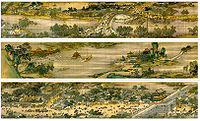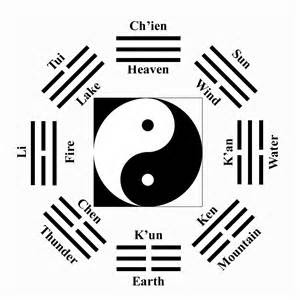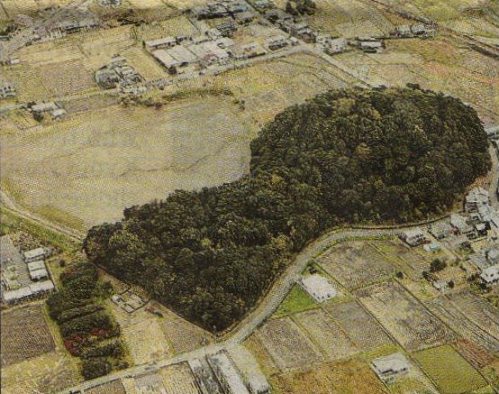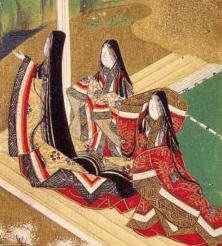| Asia 201 |
Gateway to Asia |
Spring 2018 |
| Ronald P. Loftus, http://www.willamette.edu/~rloftus/ |
|
Class Time: T, Th 9:40-11:10 am |
Office: Walton Hall 144, 6275
Office Hours: MTThF 10:00-11:00 am
Or by appointment |
|
Location: Walton Hall 21 |
This course is a survey of 2,000 years of East Asia's cultural and institutional history. The societies of East Asia, especially China, Korea and Japan have rich, complex and multifaceted historical experiences. It will be the purpose of this course to introduce students to the philosophy, religion, literature, art, envrionmental concerns and everyday life of the peoples of this part of the world from the dawn of history to the beginning of the modern era.
Student Learning Objectives:
1. To acquire a general knowledge of the scope, breadth and contours of East Asian History and Culture.
2. To develop interdisciplinary thinking and multi-disciplinary approaches to the study of the societies and cultures of East Asia.
3. To be able to think critically and ask questions that can be answered from a multi-disciplinary perspective, especially those concerning the environment and sustainability.
Course Requirements
1. Attendance and active participation. 15%
2. In-class group or solo presentations and/or assuming responsibility for leading the discussion for part of a chapter or other specified topic. 25%
3. Short reading reports and five analytical papers as assigned. 60%
4. Time Requirements for AS 201 are probablly pretty typical. Between keeping current in the Textbook reading, and preparing specific reading assignments for classroom discussion, and for drafting and revising papers, an average of around 6-9 hours per week outisde of class will be expected.
Please be aware that Willamette University has a strong plagiarism policy. It reads, in part:
Plagiarism and cheating are offenses against the integrity of the courses in which they occur and against the college community as a whole. Plagiarism usually consists of representing ideas that are not your own as your own so the simple solution is to attribute, i.e., provide clear indications of where you obtained your ideas or information.
Note: I will respect any accommodations authorized by the Office of Disabilities Services. Please tell me about these accommodations as soon as possible.
Required Readings:
1. Ebrey, Walthall, Palais, East Asia: A Cultural Social and Political History 2nd Edition (Wadsworth, 2009)
see student resources at http://college.cengage.com/history/world/ebrey/east_asia/2e/student_home.html
2. Roger T. Ames and David Hall, Daodejing: A Philosophical Translation "Making This Life Significant"
3. Murasaki Shikibu, The Tale of Genji, translated and abridged by Royall Tyler
4. Selected readings in PDF format available on the WISE site for this course.
Useful Online Primary Materials:
On China
On Japan
On Korea
Class Schedule:
Weeks 1-4: Early or Classical China: History, Philosophy, Culture
Note: the class schedule below is an approximation of the pace at which we will read and discuss materials; we may fall slightly behind or push slightly ahead depending on circumstances and how well students read and absorb materials.
Tuesday Jan. 16
|
First Class: Introduction to the Course
Thinking about the Idea of Civilizations and Early Polities |
Early writing system; oracle bones 1 and 2; Lady Hao bronzes;more
Yale Unit on the Shang Bronze Age; or here;
Shang and Zhou Bronzes; Eastern Zhou Dynasty
Prepare Readings For Thursday Sept. 1: Textbook, East Asia, pp. 2-19 and
"Confucian Terms Ames and Rosemont" PDF on WISE in "Readings in Classical Chinese Philosophy" Folder |
Thursday
Jan. 18
|
China's Long Past: Chronology
a. Xia, Shang (1500-1045 BCE); Shang and some Shang Images; More on the Shang
b. The Zhou Dynasty (1045-256 BCE) ;
More on the Zhou; See also this Chronology
c. The Warring States Period (475-221 BC)
Discuss "Confucian Terms Ames and Rosemont" PDF on WISE in "Readings in Classical Chinese Philosophy" Folder
Lexicon |
Textbook, East Asia, pp. 2-19 on Prehistory and Early Chinese History
|
| Tuesday Ja. 23 |
Classical Chinese Philosophy:
The Six Books including the I Ching/Yijing click here;
The 8 Trigrams
See also how to Consult Online
See also: Book of Changes
The Yijing consists of the 64 Hexagrams which probably grew out of the 8 Trigrams (8 x 8 = 64). The Eight Trigrams were conceived as images of all that happens in heaven and on earth. Small wonder then that both of the two branches of Chinese philosophy, Confucianism and Daoism, have their common roots here.
Watch DVD on Richard Wilhelm's long and arduous but pathbreaking work tranlsating theYijingfrom Chinese into German between 1911-1921.
Consulting the Yijing
|
Textbook, East Asia, pp. 20-34;
See Mote PDFs on WISE Chs 1-2; and Yijing PDFs on WISE
Useful Resources; On the Yarrow Stalks; PDF on Consulting Yijing with 3 Coins.
2. Sign Up to Discuss (next class period) Excerpts from:
"Confucius, Analects" a PDF on WISE, in the same "Readings in Classical Chinese Philosophy" Folder noted above.
Each student responsible for at least 5 pages for Thurs. Sept 8 |
|
|
|
| ThursdayJan. 25 |
Discuss Confucian Terms Reading and the Analects: See Chinese and English text together
Brief Student presentations on passages from the Analects PDF
Confucius: the Analects;
Three Confucian Values
See http://www.acmuller.net/con-dao/analects.html for Chinese and English versions together
Tonight, 7:00 pm Cone Chapel, Special Shakuhachi Concert
James Schlefer
|
|
Sign Up to Discuss Fingarette "Main Reading Chs. 2-3" PDF on WISE, for 9/15
See also short readings on Mengzi, Xunzi, Han Feizi, and Mozi, PDFs on WISE;
|
| Tuesday Jan. 30 |
Continue Discussion of the Analects
More on Confucius: Interpretations by Fingarette
Hundred Schools of Thought:
Mozi, Mengzi, Xunxi, Han Feizi (Legalism)
|
General Background for next sessions: Read: East Asia pp. 35-54
Discuss Fingarette "Main Reading Chs. 2-3 PDFs
Sign Ups to Discuss 2 PDFs on Thursday 9/20 (WISE):
1. We ALL read Moeller on "How to read the Daodejing"
2. Intro to Ames and Hall, Daodejing, pp. 1-53
--Optional: Mote, Intellectual Foundations, Read Mote Ch. 4, "Early Taoism" a PDF on WISE
|
| Thrus. Feb. 1 |
Finish Discussion of Fingarette Intepretation
*****
Considering Daoism:
1. Discuss Moeller and the Laozi PDFs
2. Discuss Ames and Hall's "Philosophical Introduction" to Daoism (1-53; divided into 6 sections)
Yin Yang Theory
****
Chronology: The Founding of China's Bureaucratic Empire:Qin and Han Dynasties
Slides
|
Prepare for Tuesday Sept. 20
Ames and Hall, Daoism, pp. 77-204 (81 "chapters" or "verses" pus copmmentary)
-Each student prepares 5 chapters or verses to comment on
Read: East Asia pp. 35-54
|
Weeks 5-6
Weeks 6-7
Weeks 8-9
| March 6 |
Genji Discussion III
Discuss Paper #2 Prompt
Start Transition Back to China and its Empires;
Brief Summary of Song Era (960-1279)
|
East Asia 128-146; Song dynasty
|
| March 8 |
Final Genji Discussion as Necessary (IV)
Final Genji Comments: Discuss Interpretations and Paper #2 Prompt
TRANSITION TO China During the Song "City of Cathay" Scroll and DVD;

|
The Mongols: See "Connections," East Asia 160-166;
Online details of scroll. See also Harvard site.
See these pages on Marco Polo; and here.
City of Hangzhou site; Another Hangzhou site;
Be Working on Genji Papers |
| March 13 |
"City of Cathay" Video continued; More on Song Era
Neo-Confucian Revival
Marco Polo; and here.
|
|
| March 15 |
Perceptions of China; AS 201 Bodde.pdf on Wise
|
Bring and Skim AS 201 Bodde.pdf on Wise(Resources)
East Asia, Kamakura Japan, 180-193
|
Weeks 10-11





March 21-25-Spring Break;
No Classes

April 3
|
Review Feudal Experience Part I
Japan's Fedual Experience Part II
More on Tokugawa --Video and discussion
See Edo as Sustainable City and this online article as well
Azby Brown Video
|
Medieval Culture
|
April 5
|
Discuss Elin and Marks pieces on the Environment and Sustainability in China:
|
Prepare/ Sign Up for Totman discussion:
Conrad Totman, Ch. 1: The AncientPredation, 600-850; and
Conrad Totman Ch. 3: Timber Depletion 1570-1620
Ming Era; East Asia 206-220;
More on Ming
East Asia 257-278
See The New Thought and Culture Movement PP on WISE |
Weeks 12-13 Final Paper Prompt
| 10 |
Discuss Discuss PDFs on WISE:
Totman Contrad Totman, Ch. 1: The AncientPredation, 600-850;
"Timber Depletion 1570-1620"(Totman Ch.3.pdf)
Discussion of Totman Reading
Edo and Sustainability; See Azby Brown Video\
Turning to...
The "Modern" comes to East Asia
Manchu Empire 1600-1800: The Last Empire
China's Struggle to Become Modern 1850s-1920s;
|
Ming Era; More on Ming
East Asia 279-323;
See Council on Foreign Relations website, and
The NYT Gateway Site on China and the Environment
|
| 12 |
The "Modern" comes to East Asia
Continue discussion of the Manchu/Qing Dynasty and China's Struggle to Become Modern 1850s-1920s
Reflections on the Process of Becoming Modern and Sustainability in Asia
|
Prepare PDF, Judith Shapiro, China's Evironmental Challenges, Ch.2.pdf
See also the classic 2007 article of timber custody chain here or in PDF Version
|
|
|
|
|
|
|
Weeks 14-15
| April 17 |
What China and Japan are doing right!
Discuss WISE PDF on Shapiro on China's Environmental Challenges.pdf
Videos for "Manufatured Landscapes"
Short https://www.youtube.com/watch?v=Jv23xwe0BoU
Longer (TED Talk): https://www.youtube.com/watch?v=U2Dd4k63-zM
China's Challenges in Contemporary Times:
Is China at an Environmental "Tipping Point" See Ma Jun article
See also the Wilson Center Report on "Choke Points in China's Water-Energy-Food Roadmap"
And the Economist article, "The East is Grey"
Japan and Modernity I: Background, the Meiji Restoration, "Civilization and Enlightenment"
|
Prepare two WISE PDFs on Japan:
AS 201 Kingston, Ch.10.pdf or
AS 201 Karan, Ch.13.pdf
Read East Asia on Japan, 324-352; another interesting article
Japan's Population
East Asia 370-386 |
| April 19 |
Japan and Modernity II:
Rapid Modernization 1900-1945;
Postwar Reforms and the Economic Miracle;
Contemporary Issues and Realities: Update on Nuclear Power
Discuss Kingston and/or Karan PDFs;
Update on Rokkasho Nuclear Waste Storage Facility
Video on Fukushima and Zen; (Full Hour version of this Documentaary)
Also, Salvage and Salvation
Future of Nuclear Power in Japan
See also, Totman Sum.pdf (a single page that we can examine together in class)
|
Discuss two WISE PDFs on Japan:
AS 201 Kingston, Ch.10.pdf or
AS 201 Karan, Ch.13.pdf
Read East Asia on Japan, 324-352; another interesting article
East Asia 402-440 |
| April 24 |
Brainstorm Final Paper Topics; |
|
| Aprll 26 Last Class |
Final Class /Reflections |
|
Final Paper Due Thursday May 3 at 10:00 am. Please submit by droppng a hard copy by my officre, sending me your paper via email, or using the DROPBOX function on WISE.





